How poker party deprived Japanese aircraft carrier Sinano
When the first torpedo hit the stern of the Japanese aircraft carrier Sinano, no one could even suggest that this was due to the poker royal flush and the arrogant tactics of the game. But nonetheless, it was just that.
We go in order.
So, the torpedo hit the aircraft carrier in the stern, and within 30 seconds there were explosions of three more torpedoes. It was successful, immediately the flooding of several compartments where the crew members of the "Shinano" began. Explosions and water killed several dozen people at once.
On the bridge, of course, everyone was aware of what was happening, but they did not take the hits seriously. The crew was manned by experienced sailors, many of whom survived the torpedo attacks of the enemy in smaller ships than the giant Sinano. Therefore, even when the aircraft carrier began to roll, the officers remained calm and confident that the damage could be dealt with.
Small historical retreat.
Aircraft carrier "Sinano" was laid as the third component of the planned trio of super links, with a displacement of 70 tons. Musashi, Shinano, and Yamato.
However, after the crushing loss of aircraft carriers inflicted on the Japanese the fleet at the Battle of Midway, the Sinano design was changed, and the battleship began to be remade into the largest aircraft carrier at that time.
Toshio Abe, a graduate of the Japanese Naval Academy, was appointed captain.
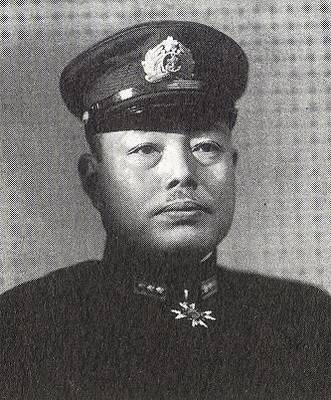
Abe was a participant in the battle of Midway, where he commanded a destroyer. Colleagues noted that Abe was a very competent officer, but completely non-diplomatic (this is a sin for the Japanese) and completely devoid of a sense of humor. But the captain's volitional qualities earned the respect of the crew.
However, we are interested not so much in the person of the Shinano commander as in his opponent. And here everything is much more interesting.
The future opponent of Abe and Sinano, Joseph Francis Enright, was a complete and unconditional ... loser!
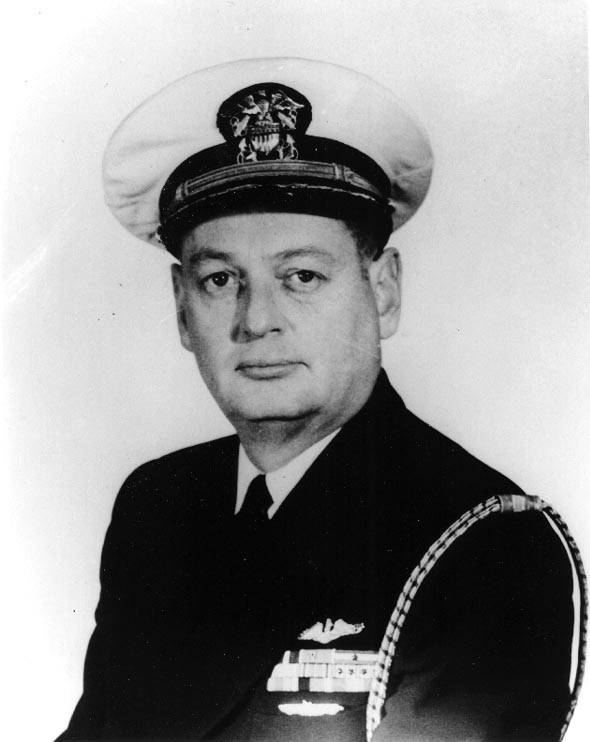
In 1933 he graduated from the United States Naval Academy in Annapolis. As a lieutenant, he received his first command, the submarine S-22, immediately after Midway. It was, in general, a combat training junk that was thrown into battle because it was necessary to torment the Japanese fleet. Accordingly, Enright simply transferred fuel, fighting not so much with the enemy as with an ancient submarine.
In the spring of 1943, Enright was promoted to lieutenant commander and appointed commander of the USS "Dace" submarine. The first military campaign was the last for Enright, because, too cautious, Enright did not fire a single volley, although he had a real opportunity to attack the Shokaku aircraft carrier with torpedoes.
Enright was removed from command and sent to serve as senior officer in the Midway Submarine Base. The coastal service has not brought any good naval officer to anything good, and, frankly burdened by such a service, Enright began to gradually walk along the sloping. That is, consume whiskey in high doses and play cards.
Oddly enough, this led him back to the cabin of the submarine.
This is not to say that Joseph Enright was just kvasil, no. He wrote several reports with the goal of getting on a warship, but for some reason Midway commander Admiral Charles Lockwood did not give Enright's request. Either did not trust, or, in spite of the booze, Enright did quite well with his duties.
Personally, it seems to me that the second option, otherwise they would have long been put out of service, the war still ...
And one of the evenings of the summer of 1944, the very event occurred that became key in our history. Enright played cards with officers from Admiral Lockwood’s inner circle and beat them.
One of the players, Captain Pace, who was impressed by Enright’s aggressive and risky style, asked if Enright could command a submarine in this style. To which Enright naturally answered in the affirmative.
It's funny, but just like that, with the help of a poker party, the career of a naval officer and everything else that followed poker was saved.
On September 24, 1944, Enright was dismissed from his post and assigned to command the Archer Fish submarine, which, having accepted a new command and supplies, went on combat patrol on October 30, 1944.
No one on board could even imagine what events await the boat and crew ...
And the two ships went there, to a point beyond the horizon at which they were to meet.
Archer Fish, a Balao class submarine with a displacement of 1526 tons, traveling at a speed of 20 knots above water and 8,75 knots under water. Cruising range was 11 nautical miles at 000 knots. The crew consisted of 10 officers and 10 junior ranks.
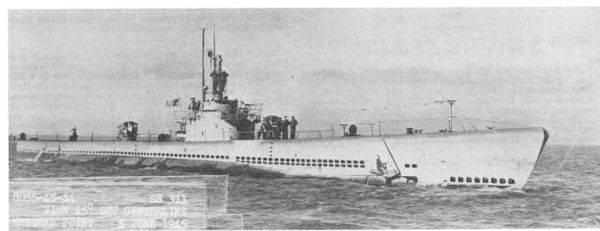
The boat was armed with 10 533 mm torpedo tubes and 24 torpedoes. In addition, the crew had a 127-mm gun and an anti-aircraft machine from Bofors.
With "Sinano" everything was more complicated. In general, the ship was built and rebuilt in an atmosphere of such secrecy that photos weren’t preserved, they weren’t taken at all! The only one that survived was made during sea trials in Tokyo Bay.
So the “Sinano” turned out to be a kind of record holder: the only large warship built in the 20th century that was never officially photographed during construction.
With a total displacement of 71 tons, the Sinano was the largest aircraft carrier built at that time. Only in 890, when the American nuclear aircraft carrier Enterprise was launched, the Sinano lost the lead.
The speed of the Sinano was 27,3 knots (50,6 km / h), which was very good for such a huge man (266 m long). Cruising range was 10 nautical miles at a speed of 000 knots.
The crew of 2 people.
The armament was impressive. 16 universal 127-mm guns, 12 120-mm guns, 85 25-mm machine guns, 22 13-mm machine guns, and 12 more launchers of 120-mm unguided anti-aircraft missiles of 28 barrels each.
Aviation The group was planned out of 18 A7M2 fighters, 12 B7A attack aircraft and 6 C6N1 scouts.
The process of completing the conversion of the superlinkor into a supercarrier was in a terrible hurry, since the Japanese were really stormy on all fronts. All this led to the fact that the "Sinano" not so weakly slammed against the walls of the dock, injuring and injuring more than a dozen people.
But despite the fact that the ship had to be repaired without commissioning, on November 11 the Sinano went to the test, and nine days later the shipbuilders handed it over to the fleet.
Captain Abe was given the task of November 28 to secretly transfer the aircraft carrier from Tokyo harbor to the Kura Sea, where the ship could be easily retrofitted and receive an air group. Three destroyers were allocated as an escort: Isokadze, Yukikadze and Hamakadze type Kagero.
Immediately worth mentioning about the escort. He was nominal. All three destroyers took part in the battle in Leyte Gulf and only the Yukikaze came out without damage. A radar was broken at Khamakadze, Isokadze lost its sonar. In general, two of the three destroyers could be assembled, nothing more. Plus, the crews who suffered losses were, to put it mildly, tired. On the whole, the escort was very so-so.
On the night of November 28, the weather was perfect. The almost full moon provided excellent visibility on both sides. At 22:48 p.m., a radar operator aboard the Archer Fish discovered a large surface ship 12 miles northeast, traveling at a speed of about 20 knots.
Commander Enright suspected that he was a Japanese oil tanker from the so-called Tokyo Express with a small escort. Eager to prove himself, Enright gave the command to emerge and catch up with the convoy.
Meanwhile, they were worried about Sinano because they were able to detect the work of the Archer Fish radar. It became clear that the "Sinano" was discovered, in addition, the Japanese could not take the bearing on the boat, because they were not sure that it was not acting alone. Captain Abe instructed the ships to increase vigilance. But since there was no more activity on the part of the enemy, little by little everyone calmed down.
Enright, meanwhile, was desperate to catch up with the tanker. The radars of that time did not give any idea of the size of the ships, but it was clear that from a distance of 12 miles a small ship simply could not see the radar. So the boat was sure that the goal was more than worthy.
The chase was a very exciting affair. In general, if the Sinano were in full swing, then Archer Fish simply had no chance to catch up with the aircraft carrier. 18 knots against 27 - you understand. But unsigned Sinano boilers did not give such a speed. In general, out of 12 boilers, an aircraft carrier could use only 8, respectively, the speed that the ship could develop was only 21 knots.
True, such a speed was more than enough to feel safe, and the American submarine could only ingloriously come back, but ...
But the pedantic captain Abe clearly followed the instructions received from the command. In principle, the officer of the Japanese imperial fleet could not have done otherwise. Therefore, having received evidence that the aircraft carrier was within the range of the radar, Abe gave the order to go anti-submarine zigzag!
In general, the Americans are fabulously lucky.
In general, instruction is a very useful thing if you know and understand it. And understand when you can move away, and when not. Abe was the right Japanese officer, and therefore instructions were a holy thing for him.
According to the instructions received, instructing the escort, Abe emphasized that the destroyers should not move away from the escorted carrier.
And here are the events that happened.
At 10.45 from the observation bridge they reported the discovery of an allegedly enemy submarine. At the same time, Isokadze left the system and at full speed headed towards an unidentified object.
The Archer Fish, the crew of which was sure that the Japanese did not see them, surfaced, and the commander and officers went out onto the bridge to try again to determine who they were hunting for. At this moment, the Isokadze also noticed the boat and rushed to it.
The situation was tense for the Americans, before the convoy it was only about five miles, while officers would pour inside the boat, while they would take water into ballast tanks - Japanese depth charges would already burst next to the boat.
Yes, at that moment, Archer Fish officers realized that their goal was a large aircraft carrier, not a tanker, which was guarded not by boats, but by full-fledged destroyers! And the lead destroyer very quickly goes to them!
But then another strange event happened. A red spotlight flashed on the mast of the aircraft carrier, and ... the destroyer turned away! The Americans were really stunned because the Japanese destroyer, which was only three miles away, could not see the boats! But the fact is, interrupting what could have been a successful attack, because from a distance of three miles, six 127-mm destroyer guns could make a pile of sinking metal out of the boat. Thoroughly picked up.
But obeying a shout from "Sinano", "Isokadze" turned away and returned to duty.
The Americans realized that here it was, luck, and went ahead. Enright, apparently remembering how he had missed the opportunity to attack the "Sekaku", sent everything to the sea devil and decided to attack at all costs. Together with his assistant, Bobczynski, Enright came to the conclusion that the Sinano is going to internal bases, that is, an approximate course of 210 degrees.
And therefore, having left the Japanese to write out an anti-submarine web, the boat went exactly this course, hoping that the calculation of Enright and Bobczynski was correct.
There was a chance if, after the next lapel on the Sinano, they did not see the boats, they could decide that the Americans were behind. And they will calmly return to the true course, where Archer Fish will be waiting for them.
At Sinano, Captain Abe was sure that he was not dealing with a single boat, but with a whole group. And the actions of the Archer Fish crew, which was just trying to figure out the situation and understand who they came across, took for a cunning plan to pull the escort ships from the escorted carrier.
Abe probably believed that the American torpedoes, which were really inferior in power to the Japanese, could not do anything to the Sinano, but if several boats were to fire without interference ... There was logic, because the captain of Shintani, the commander of Iskadze, got a drag for unauthorized actions.
In addition, the aircraft carrier commander was confident that superior speed and anti-submarine maneuver give the convoy such an advantage that it is virtually impossible to level.
But then a report was received by the head of the engine room, Lieutenant Miura, who reported that the bearing of the main shaft was overheated and that it was necessary to reduce the speed to 18 knots for a while.
Truly “sailed”.
Meanwhile, in an American boat, the commander continued to reflect on an incomprehensible show that unfolded before his eyes. Different thoughts swarmed, as Enright himself later admitted, to the extent that they were his own.
However, all thoughts remained overboard when the radar operator stuck his head into the command compartment and announced: “We are lucky, captain! Judging by the radar, the target dramatically changed course. Almost straight west. Firing range - 13 yards, azimuth - 000! ”
Enright and his officers crowded around the desk, calculating the approach of the aircraft carrier and planning an attack. Enright again ran up the ladder to the bridge. Japanese ships were clearly visible in bright moonlight.
Unaware that a faulty shaft bearing was slowing down the Sinano, the Americans suggested that they might not catch up with the aircraft carrier. Perhaps Enright imagined the Shakaku slipping away from him a year ago. Probably, the American captain was, to put it mildly, not enthusiastic about the prospect of losing the second aircraft carrier.
His plan of attack depended primarily on whether the ship would return to a base course of 210 degrees. If the aircraft carrier does this, the Archer Fish will be in the optimal position for the attack, and the Sinano will head straight for the boat.
However, if the Archer Fish approaches the Japanese on the surface, they may notice it, but if the boat goes under water, it will lose speed and the aircraft carrier may overtake it. So Enright had to continue his most secretive movements behind the convoy and pray that the aircraft carrier would turn in his direction.
Plus (more precisely, minus) was also that summer nights are short. The moon was supposed to set at 4:30 in the morning, and stop highlighting the Japanese convoy, and then the sun would generally make an attack impossible, betraying the position of the boat in the water position.
However, everything went according to the American scenario. At 2 56 a.m. on November 29, 1944, the convoy turned 210 degrees and headed straight for the boat. "Archer Fish" plunged, the crew began to prepare for the attack.
When the Sinano turned again in an anti-submarine zigzag, he involuntarily turned out to be a side to the submarine, and Enright watched the aircraft carrier in all its glory through the periscope and made a sketch of the ship to determine the type.
The Americans were surprised that there was nothing of the kind in the military qualifier of ships. Ensign Gordon Crosby, noting the unusual roundness of the bow of the ship, remarked:
“The Japanese have nothing of the kind.”
“Well, damn it, but what am I looking at then?” - objected Enright.
At 3 hours 22 minutes in the morning of November 29, 1944, the Archer Fish bow torpedo tubes spat out six torpedoes with an eight-second interval. Enright at the periscope with great pleasure watched the smoke balls of his torpedo explosions swelling near the side of the ship ...
Further, "Archer Fish" went into the depths, reasonably fearing a strike from Japanese destroyers.
On the Sinano bridge, Captain Abe reflected on how an approaching dawn would sweep away all the barriers for American bombers. But not American bombs, but torpedoes that hit the side of the ship, caused the ensuing events.
The first torpedo made a hole in an empty tank for storing fuel and refrigerating the ship, causing flooding. The second torpedo damaged the right engine room, which also flooded. The third exploded in area 3 of the ammunition depot, killing all those on duty there, as well as flooding warehouses No. 1 and No. 7. The last torpedo hit the air compressor compartment of the starboard side, causing instant flooding of it and damage control station No. 2. This hit also caused the detonation of the starboard fuel tank.
Abe already realized that after all, American torpedoes hit the ship, but did not believe that the damage was fatal. However, the fact that the “Shinano” began to roll, he must have been struck to the core.
It is worth saying here that, due to the rush to put the Sinano into operation, the high command canceled the standard tests for air pressure, which usually ensured the tightness of the compartments.
Plus, the design of the aircraft carrier was very different from the usual. Instead of the usual single main passage, the Sinano was built with two internal highways. The crew was not trained in evacuation procedures in case of emergency, moreover, it was very motley, recruited from other ships, and there was a real possibility that part of the crew simply could not be saved, just lost in the bowels of the ship.
And so it happened, the crowds of distraught Korean workers who did not understand the commands in Japanese, and civilian personnel greatly complicated the actions of the emergency teams.
Meanwhile, the ship's roll increased to 13 degrees. The pumps were operating at full capacity, but water continued to flow. Abe gave the order to try to cope with the roll with the help of counter-flooding.
However, it was not possible to completely straighten the ship, since the Shinano was still walking, and water under pressure entered the ship. Soon, due to short circuits in the mains caused by flooding, all the pumps got up.
Surprisingly, Abe still thought the Shinano could survive. The captain ordered the message to be sent to the Yokosuka Naval Station:
Meanwhile, Japanese destroyers began searching for the enemy’s submarine. Here it is worth recalling how well the situation with the sonar of these ships was. So the destroyers settled on dropping 14 depth charges in the approximate area where the enemy’s boat was located, and that’s all.
An hour after the American torpedoes hit the Sinano, Abe realized the tragedy of the situation. The roll of the aircraft carrier was now 20 degrees, and the speed dropped to 10 knots. At 6 a.m., Abe ordered a change of course to the north-west, hoping to land the Shinano stranded at Cape Ushio.
Hamakase and Isokadze made a generally miserable attempt to tow the aircraft carrier in shallow water, but with a total weight of only 5 tons, they simply could not move the ship with a displacement of 000 tons, and even got a fair amount of water.
At 10:18, Abe gave the order to leave the ship.
On board the Yukikaze, Captain Terauti ordered his senior assistant a classic order:
“Lieutenant, do not pick up sailors who shout or call for help.” Such weak hearts cannot do any good to the fleet. Pick only the strong, who remain calm and courageous.
In general, far more people drowned than were saved. Captain Abe remained in his wheelhouse and went down with the ship. As well as another 1435 people who could not be saved.
Sinano went down in history as the largest warship ever sunk by a submarine. On Wednesday, November 29, 1944, 65 miles off the coast of the Japanese island of Honshu, the ship sank after 17 hours of its first voyage.
Archer Fish arrived at the base on Guam Island on December 15th.
After her crew went ashore, Commander John Corbus, a field operations officer, shocked Enright, telling him:
“I'm sorry, Joe, but naval intelligence doesn't support your claim that you sank an aircraft carrier.” They say that there was no aircraft carrier in Tokyo Bay, so how could you sink it? Maybe you will agree to a cruiser?
Enright began to argue and handed over the pencil sketches of Sinano, made by himself through the periscope. Plus, the radio interception service was able to record a message from Japanese services that the Shinano was sunk.
Enright was awarded the Naval Cross for his triumph, and his submarine received a presidential award.
In peacetime, Archer Fish served as an oceanographic research vessel and was decommissioned only on May 1, 1968.
Later that year, the navy used the boat as a target when testing an experimental torpedo fired by the Snook nuclear submarine. The Archer Fish was towed to a point a few miles off the coast of San Diego and anchored. An experimental torpedo tore the boat in two.
This is how the story of the poker party ended, which cost Japan the largest aircraft carrier.
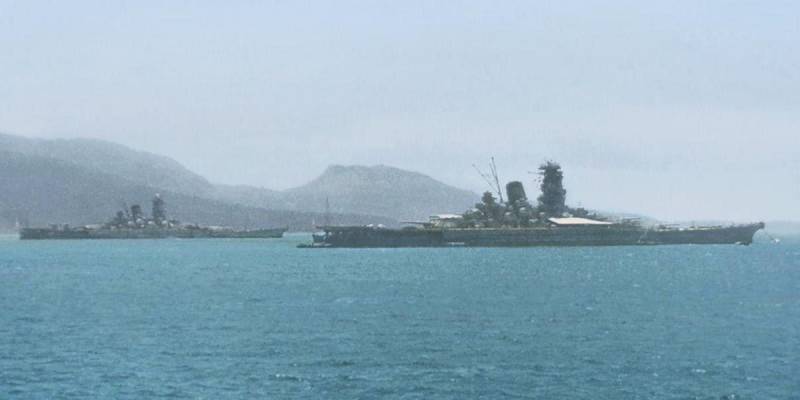
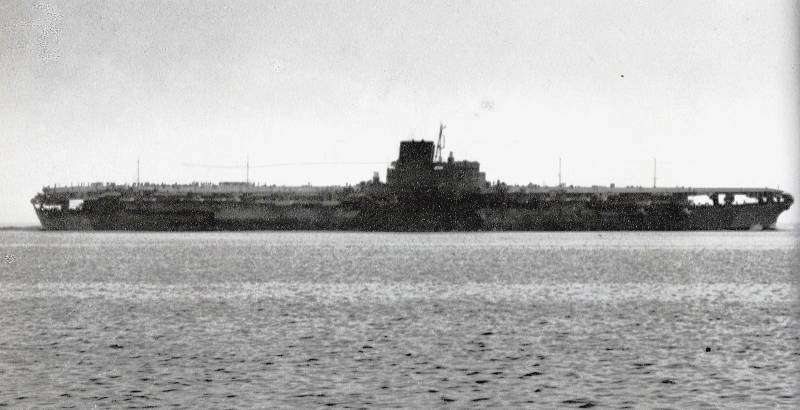
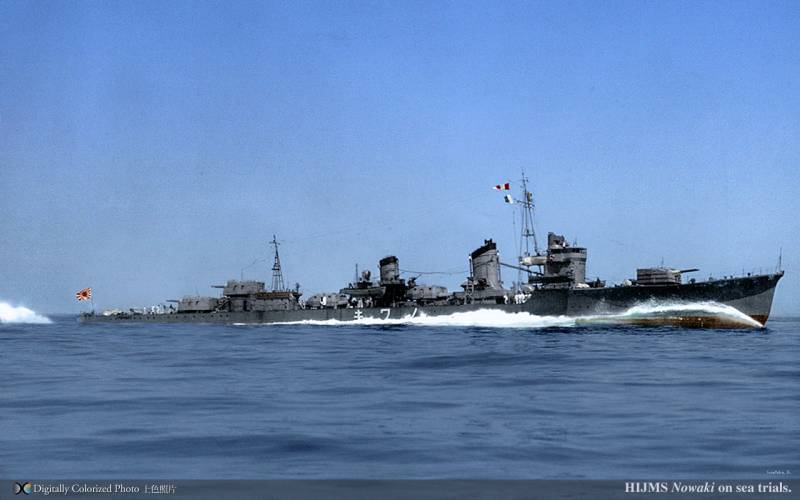
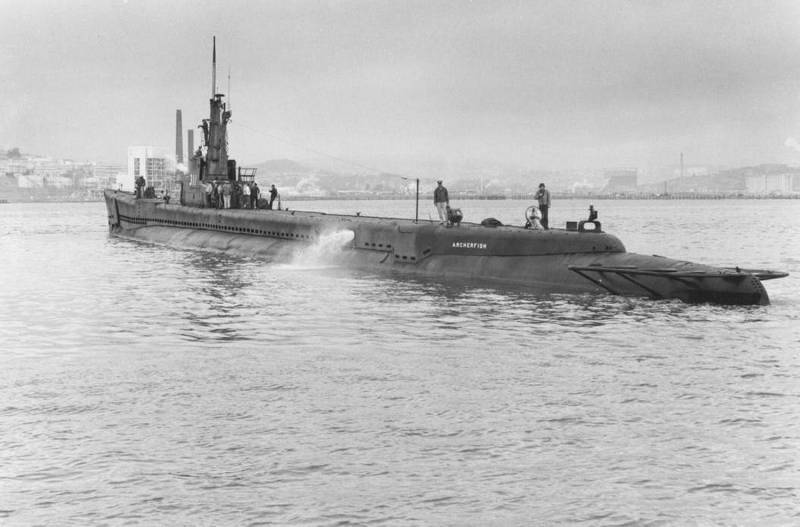
Information